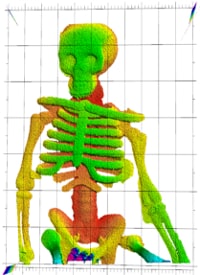LIDAR looks inside fires to help measure structural collapse

A LIDAR system has produced 3D images of objects melting in fire, an advance that could lead to a more precise and safer way of measuring structural collapse during infernos.

Optical range measurements may help overcome practical challenges posed by structural fires, which are too hot to measure with conventional electromechanical sensors mounted on buildings.
Described in Optica, the US National Institute of Standards and Technology (NIST) demonstration used a commercial LIDAR system to map distances to objects melting behind flames that produced varying amounts of soot. The experiment measured 3D surfaces with a precision of 30 micrometres or better from 2m away. This level of precision meets requirements for most structural fire research applications, according to the Optica paper.
Register now to continue reading
Thanks for visiting The Engineer. You’ve now reached your monthly limit of news stories. Register for free to unlock unlimited access to all of our news coverage, as well as premium content including opinion, in-depth features and special reports.
Benefits of registering
-
In-depth insights and coverage of key emerging trends
-
Unrestricted access to special reports throughout the year
-
Daily technology news delivered straight to your inbox










UK Enters ‘Golden Age of Nuclear’
The delay (nearly 8 years) in getting approval for the Rolls-Royce SMR is most worrying. Signifies a torpid and expensive system that is quite onerous...